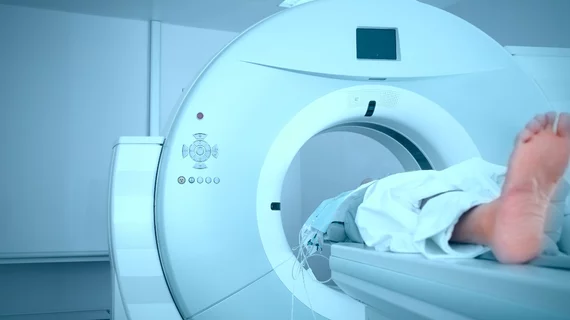MRIs appear safe if the patient has a cardiac device with abandoned leads
MRI policies regarding patients with cardiac implantable electronic devices (CIEDs) have evolved in recent years, with specialty societies and even CMS acknowledging that scanning patients with such devices is quite safe.
But what if the patient’s CIED has abandoned leads? Could that be a steadfast exception?
A team of cardiologists and radiologists out of the University of Pennsylvania in Philadelphia aimed to find out, sharing its findings in JAMA Cardiology.
“As the population of patients with CIEDs increases, so too does the number of patients with abandoned leads, making accurate risk assessment essential,” wrote first author Robert D. Schaller, DO, of the Perelman School of Medicine at the University of Pennsylvania, and colleagues. “Recent work has suggested safety of MRI with abandoned leads, but these data are from a single center. Additionally, there is a dearth of data regarding the safety of thoracic examination in these patients, where the theoretical risk for heating and current induction is greatest.”
The group examined data from 139 consecutive patients with a CIED and at least one abandoned lead who underwent an MRI evaluation at 1.5 T from January 2013 to June 2020. All patients were treated at the same facility, and no patients were excluded from the analysis. The mean patient age was 65.6 years old, and 79% of patients were men.
The study included a total of 200 MRIs of a variety of anatomic regions, including the thorax. Patient CEDs included a total number of 243 abandoned leads.
Overall, the authors found, MRIs appeared to be safe for patients with abandoned leads.
No serious adverse events were reported, though six adverse events did occur during the study. Five of those events included “reductions in lead sensing with the ability to successfully reprogram the sensitivity of the affected lead until normalization occurred.”
Another patient did experience “subjective chest heating,” causing the imaging provider to end the MRI prematurely.
“This patient had an abandoned subcutaneous array that coursed inferiorly and posteriorly around his back, distant from his pain,” the authors wrote. “He also had sternal chest wires that presumably could have heated during the MRI. This phenomenon of chest burning or pulling, which was only seen in one of 41 patients with previous sternotomy in our study, has been reported before without a conclusive determination of cause.”
Also, each patient’s CIED was assessed after the MRI had been completed. There were no observed changes in battery voltage, and the imaging exams did not result in any power-on reset events or changes of pacing rate.
“In this study of patients with abandoned CIED leads undergoing MRI, including those who underwent MRI of the thorax, a low rate of arrhythmia, patient symptoms, or change in device settings was observed,” the authors wrote. “The growing aggregate of data calls into question current institutional and CMS reimbursement policies concerning MRI in patients with abandoned CIED leads.”
Schaller and colleagues did highlight that healthcare providers should remain cautious. Even despite the “relative safety seen in this study,” they noted, it is important to follow “appropriate monitoring precautions and protocols.”
The full study is available here.

